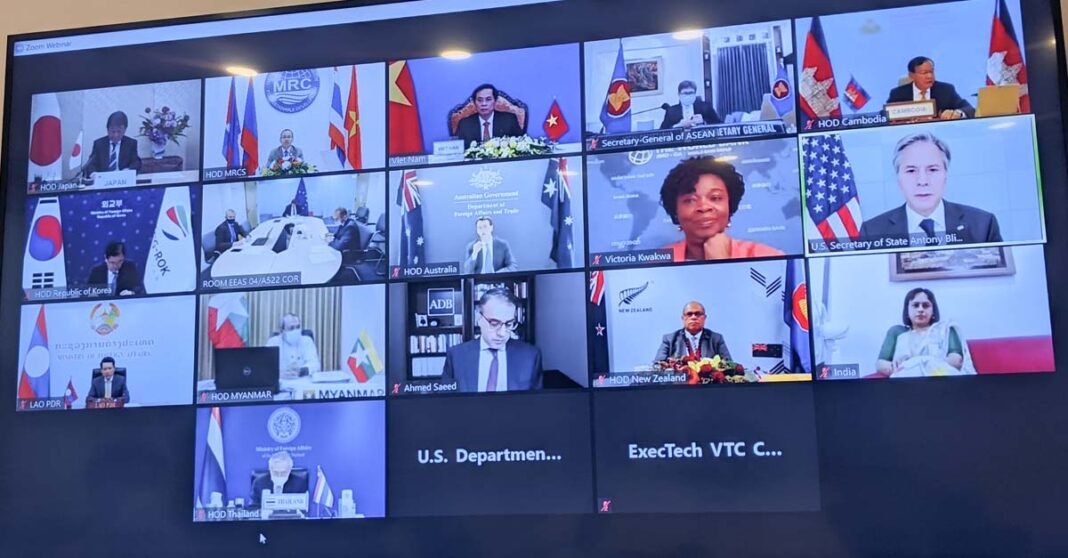The Friends of the Mekong should play a more critical role in realizing the objectives of the Basin Development Strategy for the Mekong River Basin 2021–2030, a transformative blueprint for improving the state of the basin over the next decade, the MRC’s lead executive says.
Dr. An Pich Hatda, MRC Secretariat Chief Executive Officer, made the remarks during the landmark Friends of the Mekong Ministerial Meeting held on 5 August 2021.
US Secretary of State Anthony Blinken chaired the virtual meeting that saw foreign ministers from the MRC Member Countries, as well as those from Japan, Australia, Korea, and New Zealand, attend.
The ASEAN Secretary-General, vice presidents of the World Bank and Asian Development Bank, and European Union’s managing director for Asia and the Pacific also participated.
Dr. Hatda stressed that in extending assistance to the Basin Development Strategy, ‘Friends’ could elect to choose their level of participation whilst recognizing the impact of climate change in the Mekong River Basin and Southeast Asia in general.
“I call for a deeper and stronger engagement from all our Friends,” Dr Hatda said. The MRC Secretariat became the newest member of the multinational Friends of the Mekong after being invited to join the group in March this year.

In a joint statement, the Friends of the Mekong welcomed the MRC Secretariat and acknowledged their support for the role of the MRC as the only treaty-based Mekong River basin organization.
Directly and indirectly, the Mekong River is of existential importance to more than 70 million people the MRC estimates, serving as an engine of economic growth and poverty reduction over the last decades. Together, Cambodia, Laos, Thailand, and Vietnam produce approximately half of the Mekong region’s entire rice and fish production, a third of tourism, and a large percentage of the region’s energy demands.
But recent modeling by the MRC on the impact of development highlights that environmental degradation has worsened over the more than 25 years since the MRC was established.
Hydropower dams, industrialization, urbanization, sand extraction, intensive irrigation, and other unsustainable water uses have worsened the ecological functioning of the shared river system.
The MRC advocates water infrastructures especially hydropower dams be better coordinated, and that energy planning should consider the full range of viable alternative generation sources as new environmentally friendly, economically feasible technologies emerge.
Left unchecked, the MRC anticipates severe droughts and floods, like those experienced in 2019 and 2020, will become a more frequent phenomenon, posing a direct threat to lives and livelihoods of 100 million people expected to reach by 2040 on current estimates.
To address these challenges the new 10-year Basin Development Strategy harmonizes national interests, optimizes regional benefits, balances development and environment needs, and promotes shared development responsibility.
In a reference to the shared responsibility of the newly enlarged Friends of the Mekong role in safeguarding the delicate aquatic ecosystem of the world’s 12th longest river, Dr. Hatda said the ultimate objective was more than a successful environmental outcome.
“It is our joint, but perhaps differentiated responsibility, to ensure that the Mekong River can continue to support livelihoods and remain a beacon of peace and prosperity, in the region and for all.”
The Friends of the Mekong is a multinational effort that enables integrated cooperation between and among Cambodia, Lao PDR, Myanmar, Thailand, Viet Nam, the United States, Australia, Japan, Republic of Korea, New Zealand, the European Union, the MRC Secretariat, Asian Development Bank, and the World Bank.



